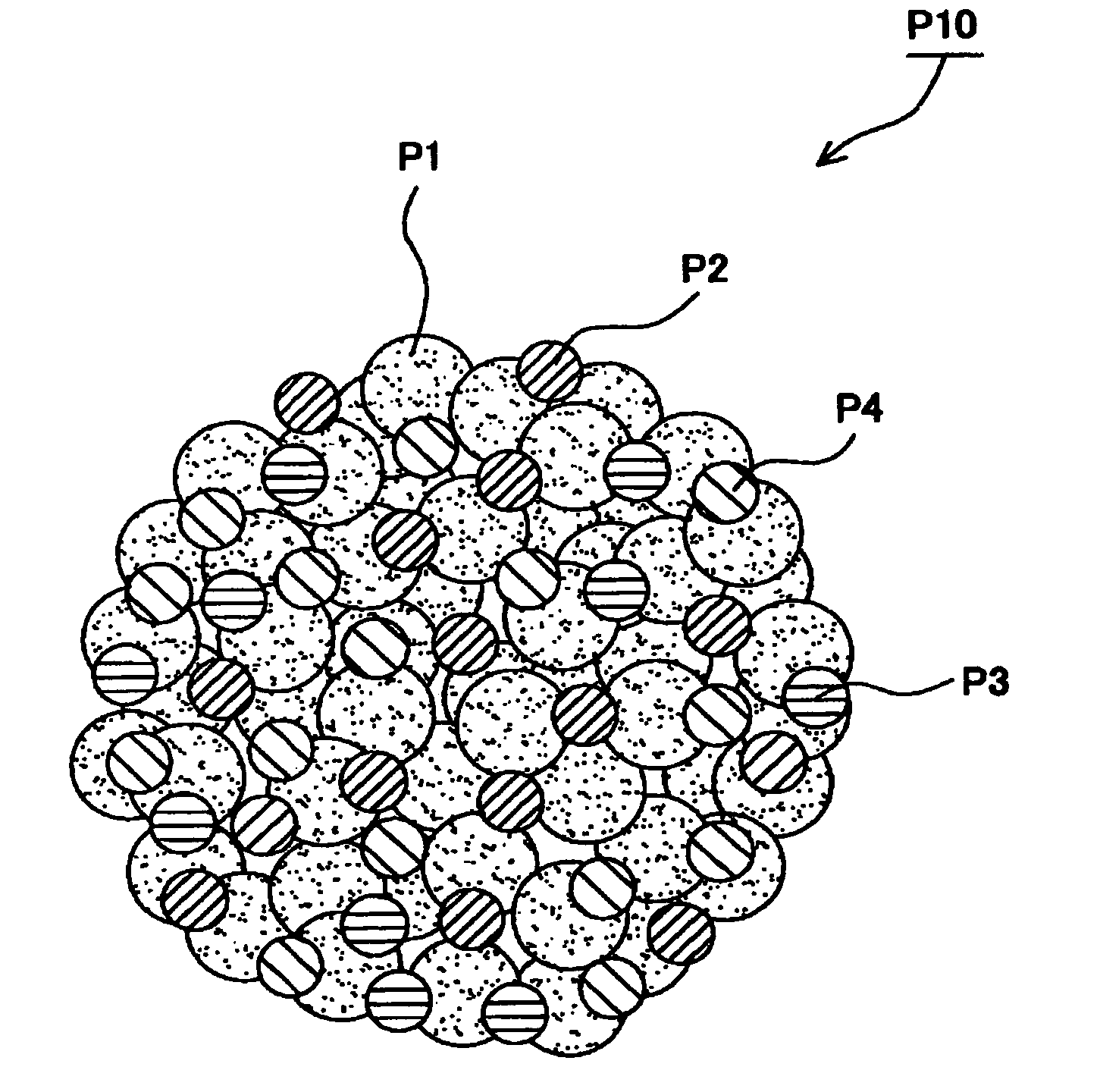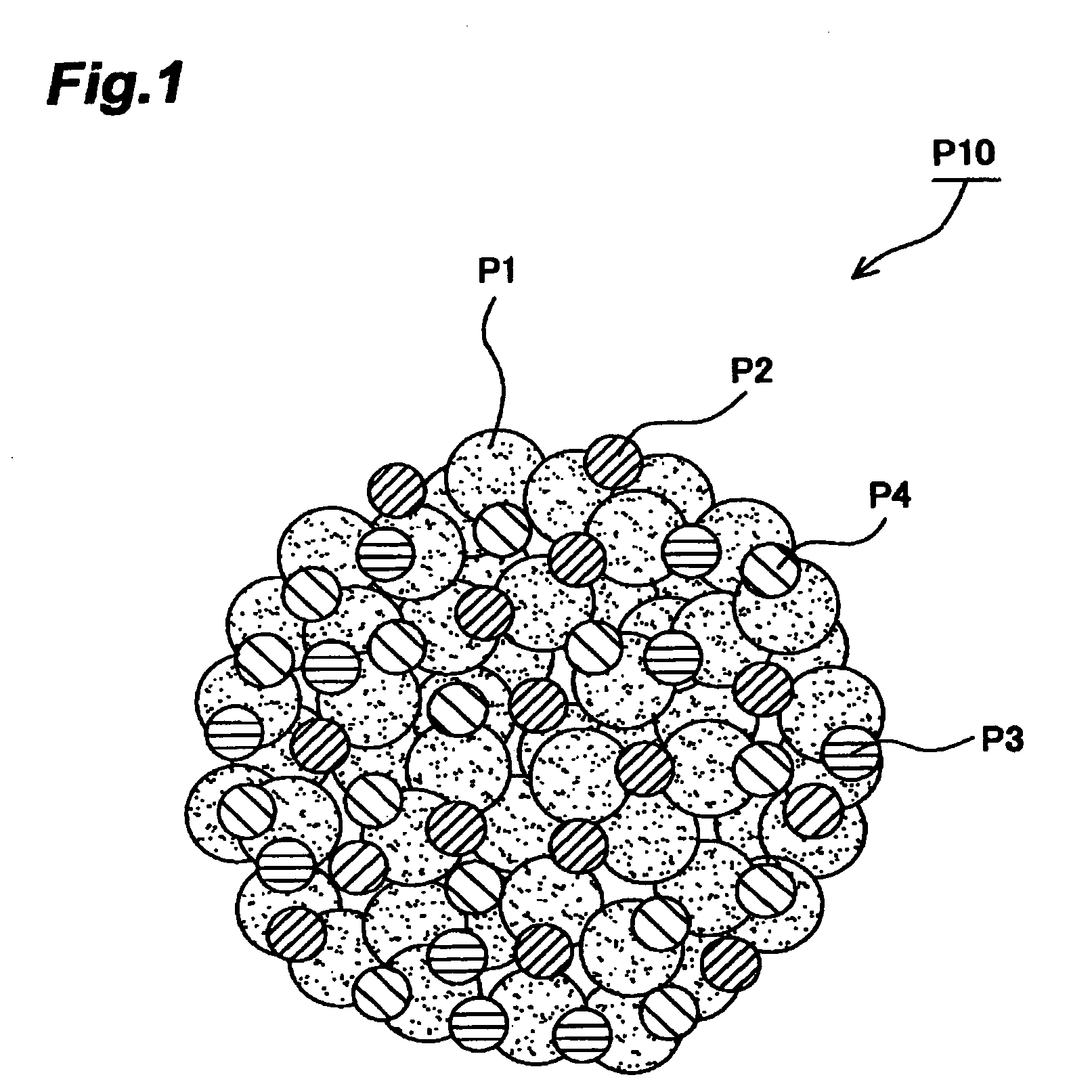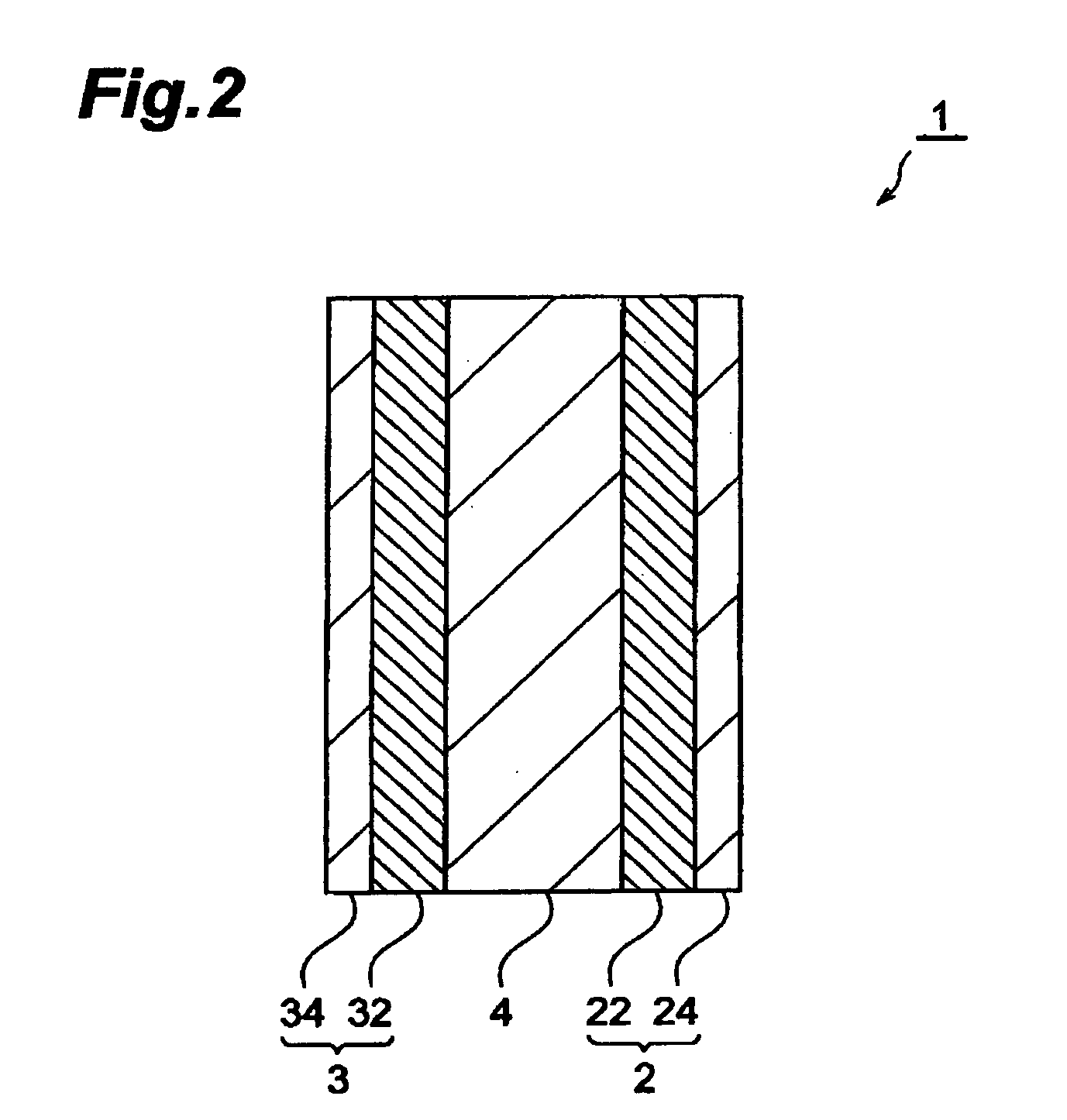Composite particle for electrode and method of making the same, electrode and method of making the same, and electrochemical device and method of making the same
a technology of compound particles and electrodes, applied in the manufacture of electrodes, cell components, impregnation manufacturing, etc., can solve the problems of limited capacity when increasing the capacity of electrochemical devices, electrochemical devices using conventional electrodes and electrodes, and electrode formation, etc., to achieve excellent device capacity, lowered internal resistance, and high capacity
- Summary
- Abstract
- Description
- Claims
- Application Information
AI Technical Summary
Benefits of technology
Problems solved by technology
Method used
Image
Examples
example 1
[0207] Making of Composite Particle
[0208] First, steam-activated carbon in a short fiber form (having a BET specific surface area of 2500 m2 / g and an average particle size (shorter diameter) of 17 μm) as an electrode active material, α-Fe2O3 in an acicular form (having a diameter of about 20 to 30 nm and a length of about 50 to 100 nm) as a redox particle, acetylene black as a conductive auxiliary agent, and polyvinylidene fluoride as a binder were prepared.
[0209] In a solution in which polyvinylidene fluoride was dissolved in N,N-dimethylformamide, α-Fe2O3 and acetylene black were dispersed, so as to prepare a material solution (constituted by 1 mass % of α-Fe2O3, 1 mass % of acetylene black, and 3 mass % of polyvinylidene fluoride). This material solution was sprayed to active carbon particles fluidized by a gas flow constituted by the air within a container having the same configuration as with the fluidized bed 5 shown in FIG. 3, so as to adhere to surfaces of the active carbo...
example 2
[0212] Composite particles (having an average particle of about 150 μm) were obtained in the same manner as with Example 1 except that α-Fe2O3, acetylene black, and polyvinylidene fluoride were brought into close contact with surfaces of active carbon particles such that the mass ratio of active carbon / α-Fe2O3 / acatylene black / polyvinylidene fluoride became 90:2:2:6. Also, an active material containing layer was obtained in the same manner as with Example 1 except that these composite particles were used.
PUM
 Login to View More
Login to View More Abstract
Description
Claims
Application Information
 Login to View More
Login to View More - R&D
- Intellectual Property
- Life Sciences
- Materials
- Tech Scout
- Unparalleled Data Quality
- Higher Quality Content
- 60% Fewer Hallucinations
Browse by: Latest US Patents, China's latest patents, Technical Efficacy Thesaurus, Application Domain, Technology Topic, Popular Technical Reports.
© 2025 PatSnap. All rights reserved.Legal|Privacy policy|Modern Slavery Act Transparency Statement|Sitemap|About US| Contact US: help@patsnap.com



